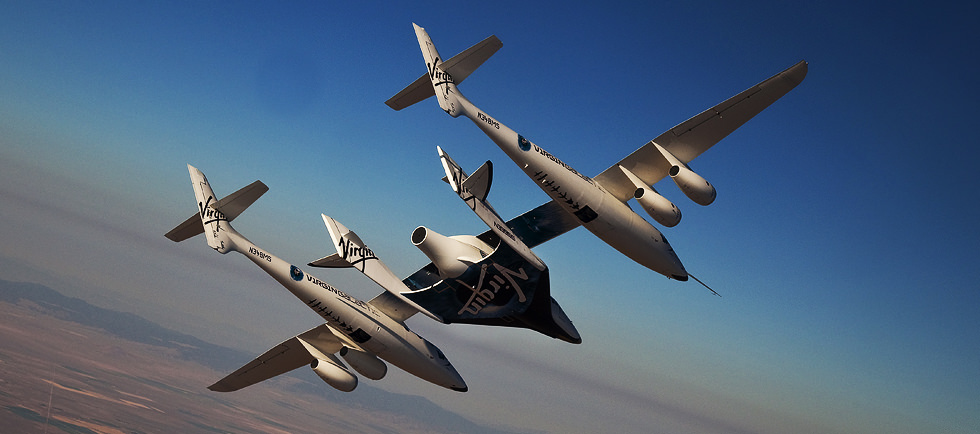For the first time, Virgin Galactic’s SpaceShipTwo, named the Enterprise, flew with crew on board. While it stayed attached to the “Eve” mothership for the duration of the July 15 flight, Scaled Composites – the builders of the spacecraft – called the flight a “significant milestone as the team marches towards the first solo flights.” Numerous combined vehicle systems tests were conducted, as two crew members on board VSS Enterprise evaluated all of the spaceship’s systems and functions from end to end in the air, and all objectives were achieved.
[/caption]
This was the third time the Enterprise had flown in its “captive carry” configuration, but the first time with crew on board. It was the 33rd flight for WhiteKnightTwo, also known as Eve. The flight time was 6 hours 12 minutes.
The crew on the Enterprise was Peter Siebold, Michael Alsbury, and on board Eve were Mark Stucky, Peter Kalogiannis, and Brian Maisler.
SpaceShipTwo can fly up to eight people (six passengers and two pilots) on suborbital flights that would provide a weightless experience for 4-6 minutes. Will Whitehorn, president of Virgin Galactic, has stated that the company would “not put a definite timeline on when the commercial flights would begin” but if all goes according to plan they hope to make their first passenger flights in 2011. Tickets are on sale for $200,000 per person.


UP! UP! and AWAY!
Cool beans at a Bar-B-Que! I just love Burt Ratan’s designs. He really is ahead of his time…? Or are the rest of us late?
I have difficulty to accept term “space” within that concept. I perfectly understand, what is suborbital flight. But spaceflight is much more about speed, not altitude. Either you have completed minimum requirement and could stay at least in Earth orbit or you can not. This concept doesn’t have in mind, even not dreaming about going to space. Let alone reentry. It’s slightly improved version of conventional atmospheric plane. That’s all. Where is space there?
Never the less, if I have an opportunity, I would never miss my flight with Virgin Galactic 🙂
cydonia. by definition these suborbital flights travel in space, they are definitely not only “dreaming about going to space” but doing it. NASA has an even lower space boundary (80 km).
You are comparing apples (suborbital space trajectories) with pears (orbital space trajectories) and calling them vegetables (non-space trajectories).
I think for most people it is all about the experience. There really isn’t much difference in feeling weightlessness at 100km and 450km. At both points you still feel more than 90% of Earths gravity…if you were stationary. Fortunately, you are moving in excess of 17,000mph so you experience weighlessness.
Personally, I feel $200K is a bit much for 4-6 minutes. Now if it was 15-20 minutes… then I could go for it.
Aodhhan, it is the experience, and it isn’t just 4-6 minutes but two full days you pay for I believe.
They plan vomit comet runs with the mother-planes (with the same free fall experience, only summing to a longer stretch) as “preparation” before the next day rocket run.
The problem with going orbital is that it is another scale of effort by many degrees. But that tourist industry started earlier and will continue too. When it is cheap enough people will have to start to choose – several suborbitals or one orbital?